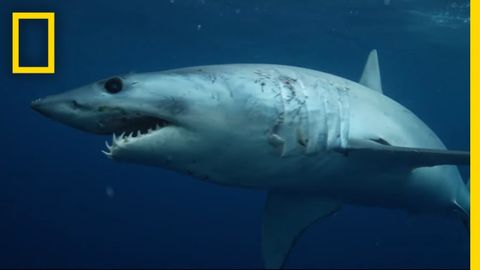【動物】誰是海洋霸主? 鯊魚游起來 (Sharks 101 | National Geographic)
lauren.huang 發佈於 2020 年 04 月 14 日  沒有此條件下的單字
沒有此條件下的單字US /məˈtɪriəl/
・
UK /məˈtɪəriəl/
- n. (c./u.)布料;素材;資料;材料;物質
- adj.重要的;物質的
US /ˈpræktɪs/
・
UK /'præktɪs/
- n.(醫生;律師等的)業務;工作;練習;慣例
- v.t./i.(醫生;律師等)開業;實踐;練習;操練;實踐
US /ˈenʃənt/
・
UK /'eɪnʃənt/
US /kənˈsum/
・
UK /kən'sju:m/
